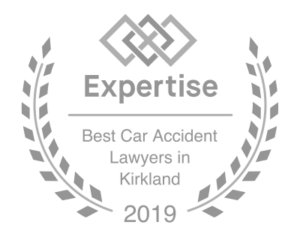 I recently took the deposition of a Biomechanical Engineer in a rear end collision case. He is a university professor who has made a second career doing expert witness work for insurance defense lawyers. In essence he ends up with the opinion “that since the forces acting on [the plaintiff] in the accident were very low, relative to forces experienced in daily living, my conclusion is that the accident is not a likely source of significant forces acting on [plaintiff’s body].”
I recently took the deposition of a Biomechanical Engineer in a rear end collision case. He is a university professor who has made a second career doing expert witness work for insurance defense lawyers. In essence he ends up with the opinion “that since the forces acting on [the plaintiff] in the accident were very low, relative to forces experienced in daily living, my conclusion is that the accident is not a likely source of significant forces acting on [plaintiff’s body].”
I have now seen two reports from this expert and the conclusions as well as most of the reports are exactly the same language. He is cookie cutting his reports and testimony to destroy legitimately injured plaintiffs in low impact rear end collisions.
The next two posts assist in destroying a biomechanical engineer using his own and other peer reviewed studies. We begin by discussing what biomechanically happens to the spine in a rear end collision.
Occupant Motion In Rear End Collisions. In the words of defense biomechanical expert Allan Tencer, there are four motion phases affecting the spine (mostly the cervical spine) in a rear end collision. As each phase presents different motions of the occupant, each phase has a different injury-causing mechanism. The four phases are explained by Tencer et al. below. (For a simpler analysis see Four Phases of Whiplash).
Retraction Phase. In the retraction phase, the upper torso is pushed forward by the seat back while the occupant’s head remains nearly stationary. Consequently the cervical spine takes on an S-shape by forcing the lower part of the neck (C5-C7) into a pronounced extension while the upper part is in flexion. The retraction phase ends when the maximum neck flexion and torso extension (maximum relative translation of the head and torso) is reached. This is an important injury mechanism as a pressure spike in the spinal canal is caused by the rapid translation between C1 flexion with respect to T1 extension during retraction. See The Neck Injury Criteria (NIC) (developed to quantify the risk of whiplash injury during the four phases of whiplash).
Extension Phase. The extension phase begins after the head reaches maximum translation and then is pulled forward by the thorax. The rotation causes the upper cervical motion segments to join the lower motion segments in extension orientations. An important injury mechanism associated with this motion is hyperextension. Injury potential is measured by the extension movement beyond normal range of motion.
Rebound Phase. The rebound phase occurs after the occupant’s head contacts the head restraint. Head restraint rebound causes the highest head translational acceleration to occur, as well as peak axial and shear forces. The cervical spine is known to be particularly vulnerable to injury when significant torque movements are combined with significant shear axial forces.
Protraction Phase. The protraction phase occurs after rebound when differential motion between the head and torso are reversed. This phase becomes significant when the forward motion of the upper torso is arrested as the “seat belt begins to tense over the pelvis and the thorax… when the body returns to its original position, producing a violent flexion of the neck.” NIC. Mechanisms associated with this motion are similar to those in the retraction and extension phases when the cervical spine translations form an S-shape toward full flexion. A pressure spike in the spinal canal is discussed in the NIC.
Pressure on Cervical Spine. The NIC states the highest pressure oscillations are are in the “shift from the s-shape to the extension, and the highest pressures were registered at the level of the C4 vertebra during the s-shape.” Now the “most accepted cause of whiplash injuries … is hyperextension… in the lower part of the neck during the formation of the s-shape (vertebrae C5, C6, and C7).” Tests by Panjabi et al. (and others cited by NIC) reveal intervertebral movements exceeded physiological limits, which causes “lesions in the capsular ligaments and facet joints at the C5-C6 level.”
In the next post we discuss factors that provide the foundation for cross examination or the biomechanical engineer.
Post Footer automatically generated by Add Post Footer Plugin for wordpress.


 I recently took the deposition of a
I recently took the deposition of a 
 In most personal injury cases a significant factor of case value is non-economic damages, also referred to as general damages. Juries are instructed to provide compensation for non-economic damages if they are demonstrated at trial.
In most personal injury cases a significant factor of case value is non-economic damages, also referred to as general damages. Juries are instructed to provide compensation for non-economic damages if they are demonstrated at trial.
